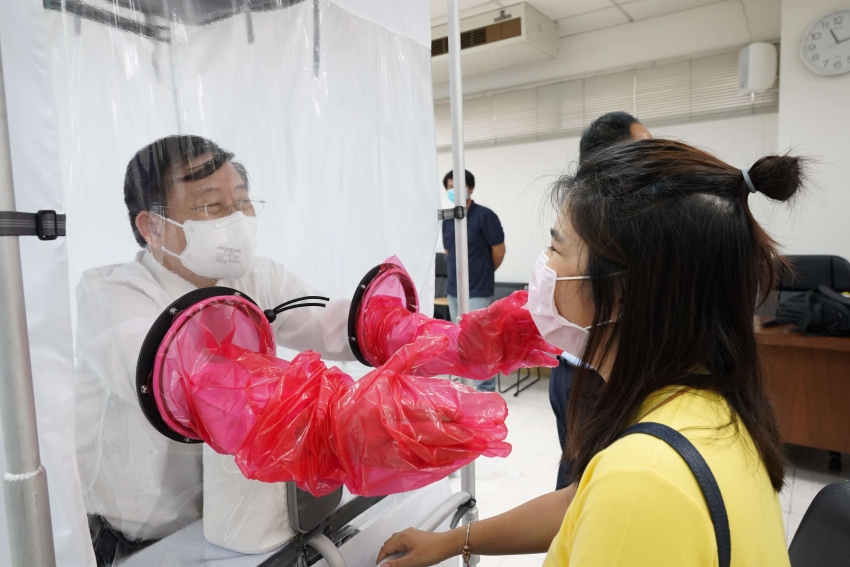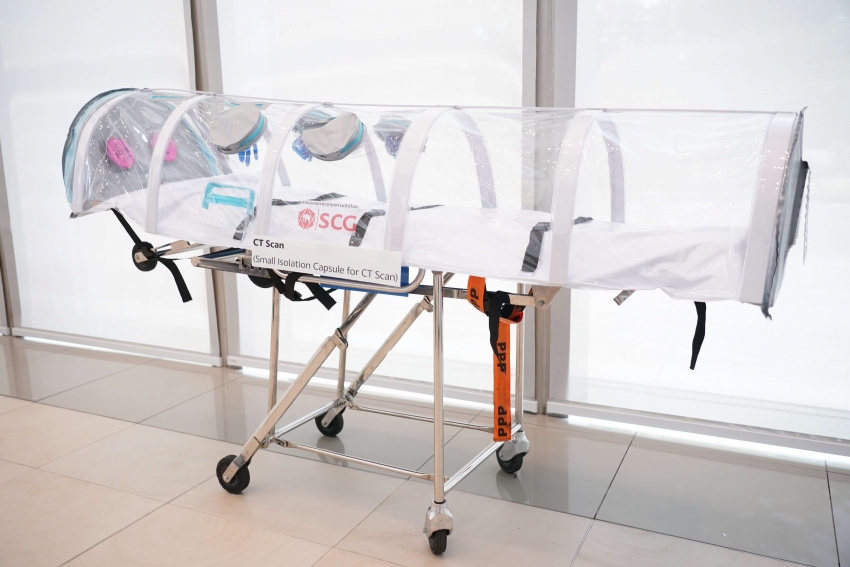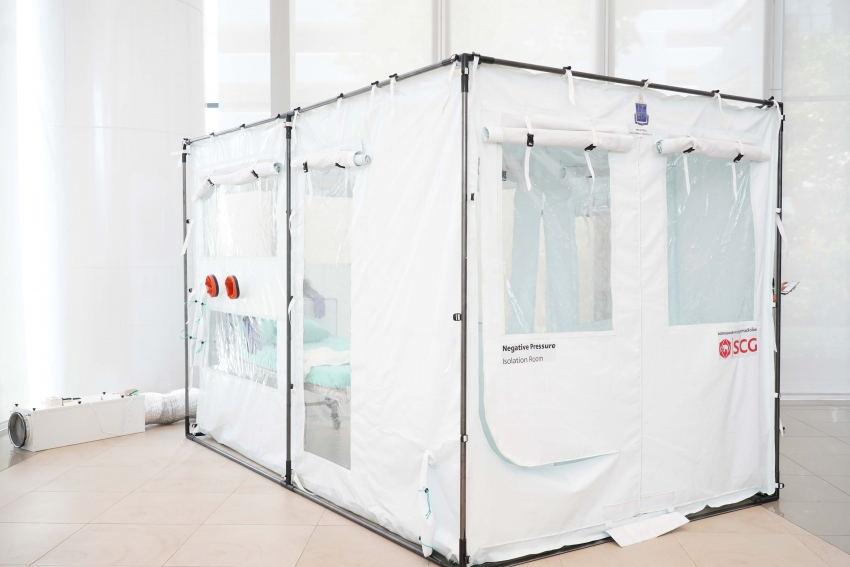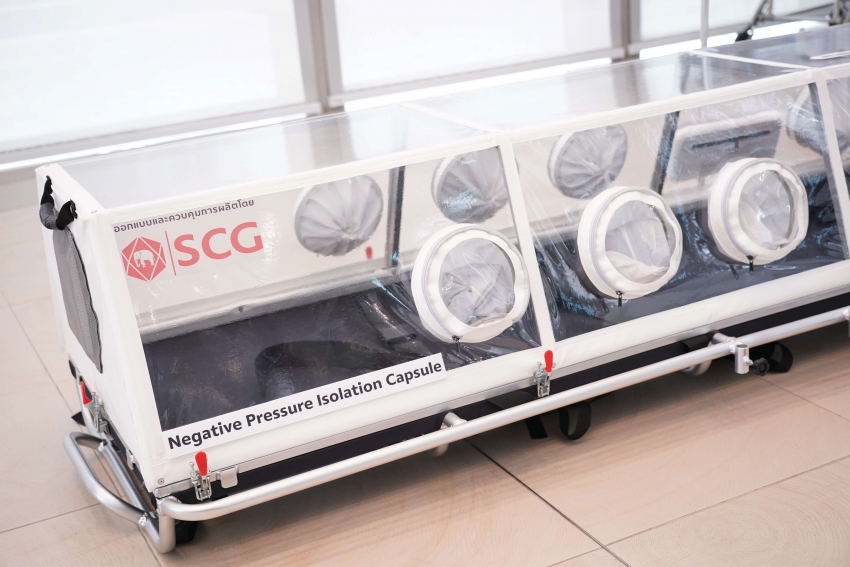The current COVID-19 crisis has forced people to adjust their behavior and lifestyles in order to maintain a social distance and reduce the spread of the disease. With medical personnel as the vanguard in vanquishing the pandemic and also helping to take care of the patients to the best of their ability, it is therefore imperative that healthcare professionals take additional precautions against infection and a material that can serve as a protective barrier and enable doctors and healthcare workers to do their job worry-free is plastic.
90 years of relationship between plastic and the medical community
Plastic has been used in the medical field since the 1930s, thanks to a wide range of outstanding properties that answer medical needs, both in terms of strength and durability, as it is less fragile than glass or ceramic. It is also impermeable to liquid and is lightweight, which helps reduce the fatigue from prolonged use of the equipment and offers more comfort to the user. Additionally, plastic can be molded into complex parts at low cost and, most importantly, it is chemical-resistant and can be sterilized with radiation without corroding like metals. It can also be synthesized or adjusted with additives to customize its properties according to specific needs.
In the medical field, plastics are able to effectively replace other materials such as metals, ceramics and glass while also lowering the cost. It has thus become an important material in the manufacturing of a wide variety of highly complex medical devices and single-use devices, whether it be artificial organs, surgical instruments, sutures, blood bags, suction tubes, surgical gloves, and syringes. Because these instruments are easier to transport to faraway destinations without damage or breakage, they have given more people access to treatment.
Personal protective equipment (PPE) all contains plastic as a primary component and takes advantage of different properties of each type of plastic, the most important of which is impermeability to liquid.
Medical masks and N95 masks are made of synthetic polypropylene (PP) fibers, which have fiber continuity and good gap control. The mask has several layers. Each layer of plastic has a different function in order to effectively prevent infection from inhalation.
Goggles and face shields are important for protecting the face and eyes from secretion droplets during procedures or when in close contact with the patient. Most of them are made of polycarbonate (PC) plastic for strength, durability, scratch resistance, clarity, as well as light weight, which makes them comfortable to wear.
Coveralls and medical gowns protect the wearer from infectious liquids or solids, including the permeation of chemicals and various pathogens, from the head and body to the wrists and ankles. The coveralls are made from polypropylene (PP) plastic fibers and coated with a water repellent substance, so that they are waterproof and breathable. The medical gown, which is worn over the coverall, is made from soft but tough linear low-density polyethylene (LLDPE). The garment lays on the body well and does not puff up. In addition, the gown does not produce crackling sounds when the wearer moves and is also well ventilated.
After use, PPE must be removed properly to avoid contact with contaminants. Also, it must be properly disposed of to prevent the spread of contamination and any possible harm to the environment. As most PPE is single-use, it is necessary to have enough reserves for use in the hospital as the demand may increase with the number of infected patients.
In Thailand, 103 medical personnel have been infected with COVID-19 (as of April 26, 2020), of which 28 contracted the infection while taking care of patients. However, for many among these, the cause and origin of the infection cannot be determined; it might have been caused by unknowingly coming into contact with an infected person while not wearing complete protective equipment.
Innovation that protects the protectors
Recognizing the risks, hardships and sacrifices of healthcare professionals, the Chemicals Business, SCG, decided to develop protective gear to keep healthcare workers safe from infection. With the company’s expertise in plastic materials, engineering, and innovative design, combined with the knowledge, capabilities and experience of the medical team, the project aimed to develop innovations that would reduce the risk of infection for healthcare workers, focusing on the prevention of the spread of infection from patients to medical care professionals and on making this innovation accessible in all areas, even remote areas. And thus the Mobile Isolation Unit was born. In addition to the ease of transportation, easy installation, and light weight, this invention helps save a large amount of PPE as it obviates the need to procure or wear it, thus allowing doctors to work with peace of mind and flexibility despite having to face such a big battle against COVID-19.
Staying safe even when in direct contact
In the screening process, healthcare professionals might get infected through the swab procedure. SCG has therefore designed the Negative/Positive Pressure Isolation Chamber to separate medical personnel from patients. The small cylindrical chamber fits one person, has glove ports for easy examination of the patient, and allows the healthcare provider and the patient to see and communicate with each other.
Similarly, the tent-like Negative Pressure Isolation Room is suitable to be placed in areas where there is a need to control the dispersal of germs, such as emergency rooms, ICU rooms, and general patient wards. Designed for easy installation and dismantling, the isolation room can be relocated as needed to support the number of infectious patients that may increase rapidly.
Transferring patients with confidence
Transfer of the patient is another step that involves high risk of the germs spreading through the air. This may result in other patients in the transit area being infected. The Patient Isolation Capsule has thus been developed to help prevent the spread of infection during transfer. It is designed to fit one patient and can be connected to a medical device table. Another invention is the Small Patient Isolation Capsule for CT scan, which is designed so that the upper structure does not contain metal but is made with the strong and lightweight Plaswood instead. Therefore, it is able to enter a CT scanner without any problem. It is also flexible, can be adjusted to cater to patients in both sitting and lying positions, and can be used to transport the patient in an emergency vehicle.
Plastic innovation to combat the COVID-19 pandemic
Designed with practicality in mind and tested by medical professionals, every medical innovation by SCG features polyvinyl chloride (PVC) as the main material, including both transparent PVC sheets and PVC canvas. The transparent PVC is completely see-through without glare. As it can be cleaned using regular hospital sterilization method, it can be reused many times.
It can be seen that plastics have always been a true friend of healthcare professionals. Even in the COVID-19 crisis, plastic has been assigned a vital role in protecting the medical team, especially in preventing the spread of infection by relying on the special properties that set it apart from other materials. Therefore, it is urgent and vital that further research and development be advanced to achieve innovative plastics that meet economic, social and environmental needs, especially innovative plastic for medicine, to ensure that in the next battle we have to face, we will have a powerful weapon to protect everyone.








